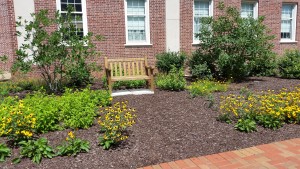Knoebels is a free admission amusement park in Pennsylvania, located nearby much of my family. During my most recent visit, I thought more about an aspect of the park’s history which I had not previously given much thought: the floods. I was reminded of this in class during a discussion about how we, as humans, are not always at the top of the food chain or in control of natural occurrences. We may be totally at the mercy of natural forces, one of which being the incredible force of water.
Dillard’s Flood piece discusses the flood at Tinker Creek caused by Hurricane Agnes, the very storm which first caused floods at Knoebels in 1972. Dillard describes the flood by saying, “Tinker Creek is out of its four-foot banks, way out, and it’s still coming. The high creek doesn’t look like our creek. Our creek splashed transparently over a jumble of rocks; the high creek obliterates everything in flat opacity.” The sheer force of the flooding water overwhelms the creek as the narrator knows it and completely transforms it into a whole different creature. This Hurricane Agnes caused floodwaters to rise and meet 24 out of 25 total rides in the park. Despite this, the park reopened only 9 days later. The area was transformed, like at Tinker Creek, by the sweeping waters.
Knoebels faced additional floods in 1976, 1996, 2004, 2006, and 2011. There are markers around the park to indicate the levels to which the water rose during a particular flood. Signs cover various trees and the side of a covered bridge, showing how much of the park would have been submerged on these occasions. I actually remember the impacts of the 2011 flood, which replaced the 1972 flood as being considered the worst to hit the area. The force of the rushing waters left the workers and attractions powerless, as they swept across this happy place, spreading further and reaching areas never before affected. The small stage for daily shows, where my cousin performed, was carried across the park. The covered bridge was largely submerged. As in 1972, the dedication of the community and staff allowed the park to reopen only 10 days later. It is always shocking to see the high water marks while walking around the park today, knowing how forceful and intense the waters were during the floods. And yet, the park has continued to operate successfully with minimal setbacks.


